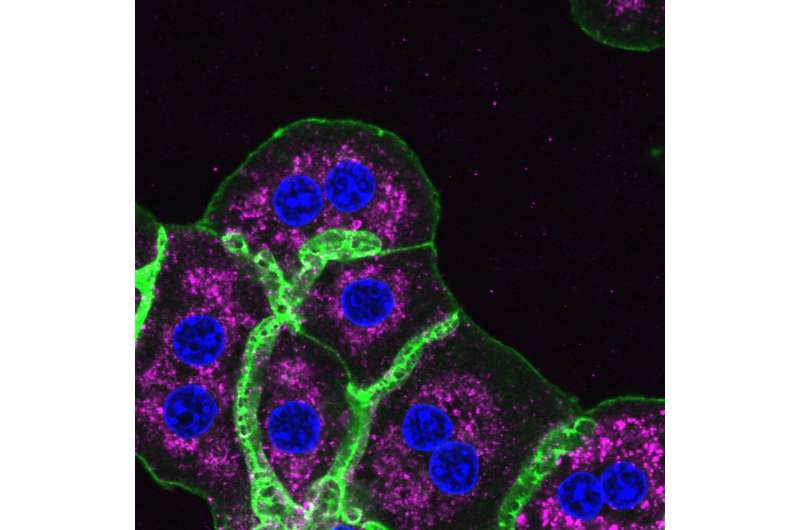by Helmholtz Zentrum München Deutsches Forschungszentrum für Gesundheit und Umwelt (GmbH)

A group of researchers from the Helmholtz Munich Institute for Diabetes and Cancer (IDC) have unraveled a new strategy to alter glucagon receptor signaling in the liver by changing its intracellular trafficking. Glucagon is a peptide hormone, that is responsible for glucose balance and thus the regulation of blood glucose levels. The novel approach offers therapeutic potential for the treatment of type 2 diabetes by uncoupling glucagon’s glucose and lipid metabolism-related effects.
During fasting, the hormone glucagon circulates through the body to initiate the release and breakdown of stored glucose and lipids from the liver to provide energy. Whether and how the usage of the two energy sources (glucose and lipids) can be activated independently was not known to date. A study by Revathi Sekar, Karsten Motzler and colleagues published in Cell Metabolism now identifies that depleting the protein Vps37a from the liver alters the localization of the glucagon receptor within the cell, thereby allowing distinct activation of glucose metabolism on intracellular membranes without affecting lipids.
Vps37a controls transport of the glucagon receptor through the cell
The liver is the main organ required for maintaining balanced blood glucose levels during fasting by releasing stored glucose upon external signals, such as glucagon. In type 2 diabetes, however, this pathway becomes overactivated, leading to glucose production from the liver despite already high blood glucose levels. This condition of too high glucose levels in the blood is called hyperglycemia. Pharmacological inhibition of glucagon action in the liver has been proven to be challenging, as glucagon is not only regulating glucose production but also mediating liver lipid breakdown.
Therefore, blocking glucagon action bears lipid accumulation in the liver as negative side effect. The team of researchers led by PD Dr. Anja Zeigerer, group leader at the IDC, has now found a possible way to disconnect the two pathways, by interfering with the intracellular location and signaling pathways of glucagon receptor, thereby reviving glucagon antagonism as potential treatment for type 2 diabetes.
Need for novel treatment options
Obesity and associated type 2 diabetes prevalences are strongly increasing. However, as not every patient is responding equally well to already existing therapies, more treatment options are required.
The study of first authors Revathi Sekar and Karsten Motzler and colleagues expands the current treatment horizon by offering an elegant way to make use of effective blood glucose reduction through glucagon inhibition without lipid-related side effects.
Revathi Sekar et al, Vps37a regulates hepatic glucose production by controlling glucagon receptor localization to endosomes, Cell Metabolism (2022). DOI: 10.1016/j.cmet.2022.09.022
Provided by
Helmholtz Zentrum München Deutsches Forschungszentrum für Gesundheit und Umwelt (GmbH)
Citation:
Switching tracks: Changing the trafficking of the glucagon receptor in the liver regulates its metabolic signaling (2022, October 18)
retrieved 19 October 2022
from https://medicalxpress.com/news/2022-10-tracks-trafficking-glucagon-receptor-liver.html
This document is subject to copyright. Apart from any fair dealing for the purpose of private study or research, no
part may be reproduced without the written permission. The content is provided for information purposes only.
Source link




